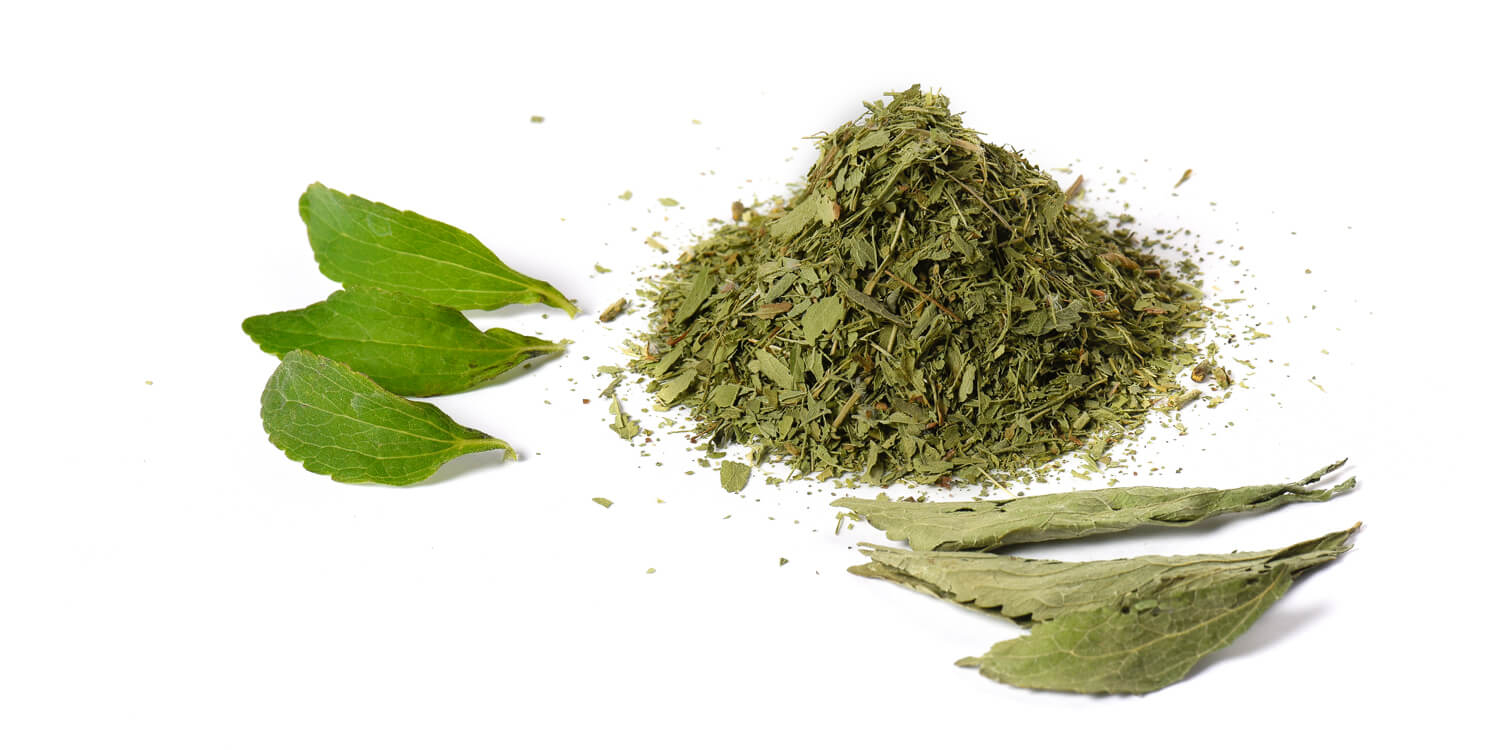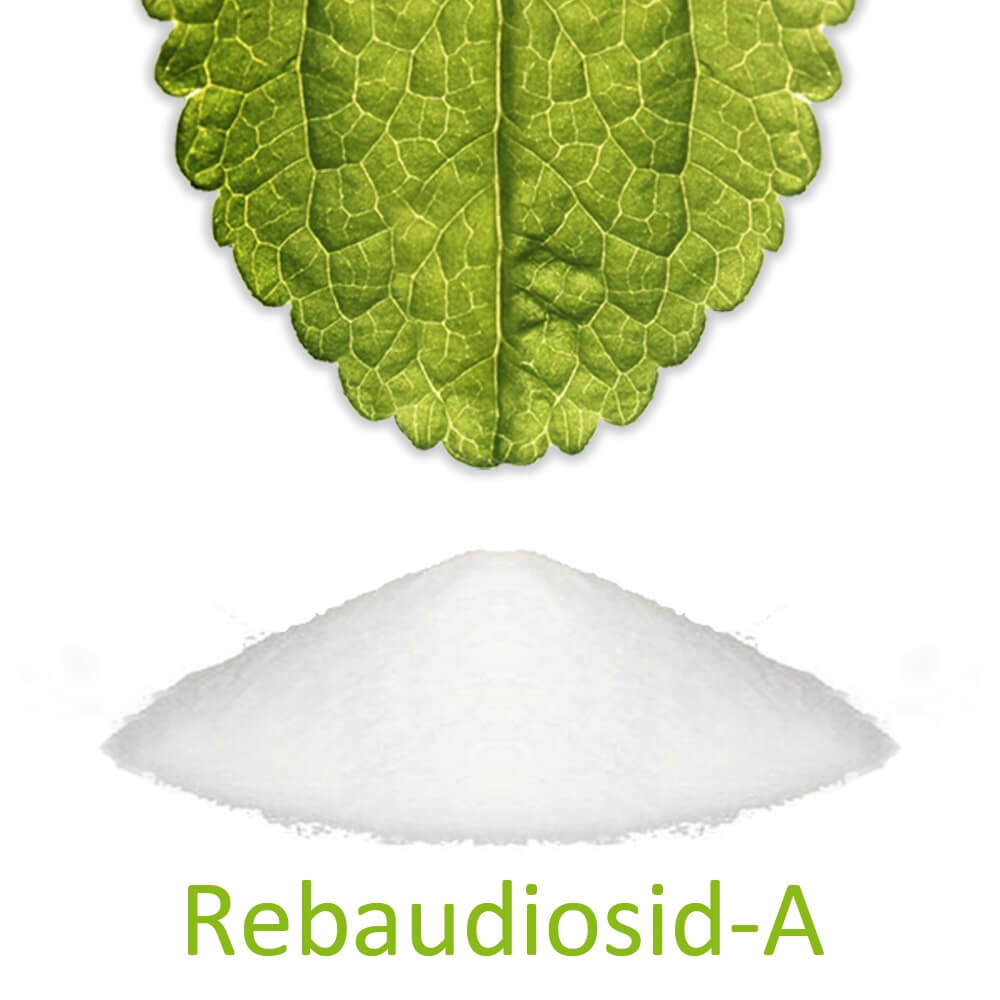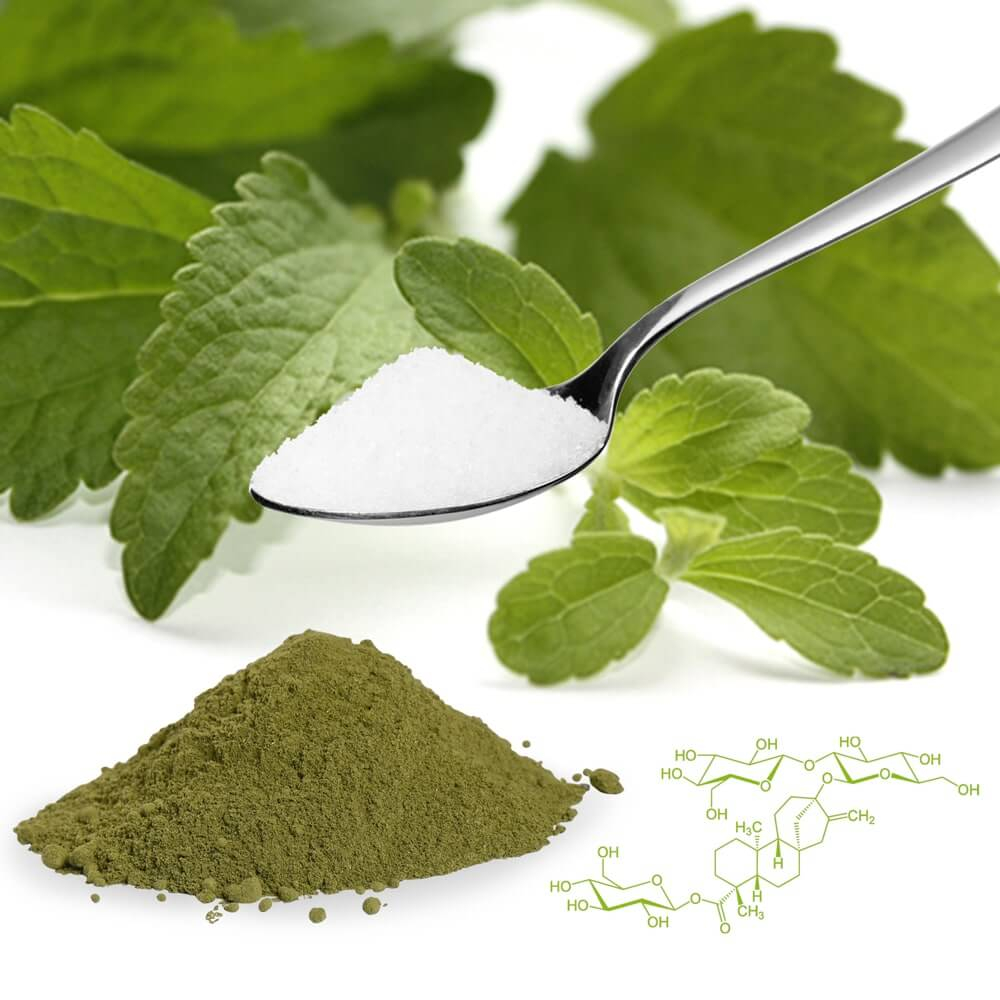The ingredients of the Stevia plant
The steviol glycosides are the most important and also the best-known ingredients of the Stevia rebaudiana Bertoni plant. They belong to the secondary carbon compounds, as they are among the so-called diterpenes.
The rebaudiosides A, C, D, E and the dulcoside A, as well as the stevioside have been classified so far. The rebaudiosides A and C take up 2-4 and 1-2 % of the plant mass, respectively, and the steviosides 2-10 % of the plant mass and thus have the largest share in the sweetening power. The proportions can vary from plant to plant.
Rebaudioside A has the strongest neutral sweetening power of all steviol glycosides, while the others can have a bitter aftertaste when consumed in high doses.
Sweetening without calories
The special structure of steviol glycosides means that Stevia products have almost no calories.
Carbon bonds are compounds in which a sugar molecule is linked to alcohol. The glycosides are such compounds. The steviol glycoside compounds have a sugar component (the glucose molecules) that the body cannot fully utilise.
100mg of pure steviol glycoside have a much higher sweetening power than normal household sugar, but also only half a calorie. If you want to achieve this sweetening power with conventional sugar, you need 30g for this and have an additional calorie intake of 125 calories.
The carbohydrates from Stevia leaves and teas also do not lead to a negative energy balance, as the glucose molecules do not enter the blood because they are not digested in the intestines, as they occur as plant-based structural substances.
However, carbohydrate fillers or carriers may be present in Stevia powder, Stevia tablets or Stevia granules, which are needed to guarantee a certain consistency of the products. In terms of the daily consumption of Stevia, however, the carriers have no effect on the energy balance, nor do they affect diabetics.
Of course, the additives for improving consistency are found in much lower proportions in high-quality Stevia products.

Valuable leaf components: Oils and proteins
Stevia rebaudiana Bertoni also contains other valuable ingredients. For example, the leaf provides unsaturated fatty acids, and components for protein biosynthesis, as well as proteins and "empty" fats. This ratio of oils and proteins is the secret of Stevia's skin-tightening effect.


Minerals, vitamins and trace elements
Minerals, vitamins and trace elements are essential for a balanced diet and are also contained in Stevia rebaudiana Bertoni.
Minerals
Quite a few minerals are contained in Stevia products, for example phosphorus, iron, magnesium, potassium and calcium. These minerals are especially good for the cardiovascular system, for bone formation and against porosity of the bones and also important for blood formation. These minerals are also important for the immune system.
Trace elements
Some vital trace elements such as zinc and selenium are found in the products of the Stevia plant. But there are also other trace elements, such as manganese, silicon, cobalt or chromium, which are involved in enzymatic processes.
This means that they ensure the function of the excretory organs, oxygen utilisation and the physiological build-up and breakdown of energy sources.
Vitamins
Vitamin C is very important for the defence against infections and is the most important vitamin contained in Stevia. Also, important and contained in the plant are the vitamins beta-carotene (supports the visual process) and B1 (the "nerve vitamin").
Plant ingredients
But that is not all that Stevia has to offer, there are other ingredients that have been of interest to folk medicine for centuries.
For example, there are the flavonoids, which are plant substances that support the immune system. Among the 7 proven flavonoid compounds is rutin. Rutin is mainly used in larger quantities for circulatory disorders or venous diseases.

 German
German Dutch
Dutch French
French Italian
Italian Portuguese
Portuguese Spanish
Spanish
